Host:
Amit Prakash - Co-Founder & CTO of ThoughtSpot, former engineer at Google and Microsoft
Dheeraj Pandey - Co-Founder and CEO of DevRev, and former CEO of Nutanix
Guest:
Alex Dimakis - Professor at UC Berkeley and co-founder of Bespoke Labs
Summary
In this episode of The Effortless Podcast, hosts Dheeraj Pandey and Amit Prakash continue their deep dive into the DeepSeek R1 breakthrough with guest Alex, a leading AI researcher. This conversation picks up where the last one left off, exploring the implications of DeepSeek R1, a new open-weight AI model that challenges industry norms and frontier labs.
The discussion covers key architectural innovations, efficiency improvements, and the impact of open-source AI on the global landscape. It also touches on China's growing role in AI innovation, reinforcement learning breakthroughs, and the shrinking hardware requirements for powerful AI models.
Key Takeaways from the Episode:
DeepSeek R1 is a major open-source breakthrough – Unlike proprietary models from OpenAI and Anthropic, DeepSeek R1 has released its weights, allowing researchers and startups to experiment and innovate freely.
Open-source AI is disrupting the status quo – While OpenAI and others have led AI advancements, DeepSeek’s openness challenges the closed-source model, leading to more community-driven progress.
GRPO enables reasoning from scratch – A new reinforcement learning technique called GRPO (Group Relative Policy Optimization) allows models to develop reasoning skills without explicit human-labeled reasoning traces.
Engineering optimizations make AI more efficient – DeepSeek R1 features multi-headed latent attention, KV caching, mixture of experts (MoE), and multi-token prediction, dramatically improving speed and memory efficiency.
Fine-tuning is making a comeback – With models becoming more structured and efficient, fine-tuning on specific tasks (rather than relying solely on prompt engineering) is proving more effective.
AI innovation cycles are accelerating – Unlike previous computing revolutions (Unix, Linux, cloud computing), AI breakthroughs are happening within months instead of decades, shortening the competitive cycle.
Hardware demand remains uncertain – While smaller, efficient models reduce the need for expensive GPUs, more powerful AI capabilities drive higher inference loads, keeping GPU demand strong.
Deep Dive: Key Innovations in DeepSeek R1
1. Open-Weight Reasoning Models: A Game Changer
Until now, the most powerful AI models—such as OpenAI’s GPT-4 and Anthropic’s Claude—have been closed-source. DeepSeek R1 changes that by releasing its model weights to the public, making advanced AI more accessible to startups, researchers, and developers.
Open-weight models allow for local inference, meaning companies don’t have to rely on cloud APIs.
Researchers can fine-tune these models for specialized tasks, accelerating innovation.
The availability of open-weight models challenges Big Tech’s monopoly over AI advancements.
2. Group Relative Policy Optimization (GRPO): A New Way to Teach AI to Think
DeepSeek R1’s breakthrough lies in its reinforcement learning method, GRPO, which allows the model to learn reasoning capabilities through trial and error.
How GRPO works:
The model generates multiple reasoning traces (attempts to solve a problem).
It identifies which traces lead to correct answers and reinforces them.
Over time, the model learns to self-correct and explore solutions more effectively.
This is different from traditional supervised learning, where models simply imitate human-written examples.
3. KV Caching & Multi-Headed Latent Attention: Engineering for Efficiency
DeepSeek R1 introduces several optimizations to improve AI efficiency:
KV Caching: Allows models to store previously computed attention layers, reducing memory usage.
Multi-Headed Latent Attention: Inspired by LoRA (Low-Rank Adaptation), this method simplifies the model architecture while preserving accuracy.
4. Mixture of Experts (MoE): Smarter, Not Bigger AI
Instead of using a single large neural network, MoE divides the model into experts that specialize in different tasks.
Only a subset of these experts is activated for any given input, saving computational resources.
This makes the model cheaper to run without sacrificing quality.
5. Multi-Token Prediction: Generating More, Faster
Most language models generate text one token at a time. DeepSeek R1 can predict multiple tokens at once, significantly improving inference speed.
This works like parallel computing, allowing the model to generate text more efficiently.
The trade-off is that it requires careful optimization to maintain accuracy.
The Geopolitical & Economic Impact of DeepSeek R1
A “Sputnik Moment” for AI
The release of DeepSeek R1 challenges the assumption that AI breakthroughs only happen in the U.S. and Europe. The Financial Times described this as a moment that breaks the myth:
“The U.S. innovates, Europe regulates, and China imitates.”
This shift raises important questions:
Will U.S. labs be forced to open-source more models?
How will AI regulations adapt to a world where cutting-edge models are developed globally?
What role will open-weight AI play in enterprise applications?
What Does This Mean for NVIDIA & the Hardware Market?
On one hand, smaller, more efficient models reduce the need for expensive hardware.
On the other, increased AI adoption (including local AI) could drive demand for GPUs across a broader user base.
The rise of edge AI (running models on consumer devices) could benefit Apple, AMD, and other chipmakers, challenging NVIDIA’s dominance.
Will Language-Only AI Lead to AGI?
DeepSeek’s founder argues that human-like intelligence can emerge from language alone, without requiring vision, audio, or robotics. This is a major bet that goes against the trend of multimodal AI, which integrates text, images, and video.
Yann LeCun (Meta’s AI Chief) believes this approach is flawed, arguing that vision and real-world interaction are crucial to intelligence.
If DeepSeek is right, it could achieve AGI faster by focusing narrowly on language rather than spreading resources across multiple modalities.
Host Biographies
Dheeraj Pandey
Co-founder and CEO of DevRev, and former CEO of Nutanix. Dheeraj has led multiple tech ventures and is passionate about AI, design, and the future of product-led growth.
Amit Prakash
Co-founder and CTO at ThoughtSpot, previously at Google and Microsoft. Amit has an extensive background in analytics and machine learning, holding a Ph.D. from UT Austin and a B.Tech from IIT Kanpur.
Guest Information:
Alex Dimakis is a professor at UC Berkeley, an expert in machine learning, and the co-founder of Bespoke Labs, a company focused on building AI systems tailored to enterprise needs. Alex has spent over a decade researching machine learning foundations, including time at USC and UT Austin. Learn more about Bespoke Labs at Bespoke Labs.
Episode Breakdown
{00:00:00} Welcome back! – Setting the stage for a deep dive into DeepSeek R1’s impact.
{00:01:00} Recap & Why This Episode Matters – A quick summary of the previous discussion and why this follow-up is crucial.
{00:02:30} What is DeepSeek R1? – Understanding its significance and why it stands out.
{00:03:30} China’s AI Breakthrough – How DeepSeek challenges the stereotype that China only imitates.
{00:05:00} Open-Weight Models vs. Closed AI Labs – Why open-source AI is gaining momentum.
{00:07:30} The Rapid Evolution of AI – OpenAI’s dominance faces new challengers.
{00:09:00} Fine-Tuning vs. Inference – Why open weights are critical for AI development.
{00:12:00} QKV & KV Caching Explained – Breaking down AI memory efficiency.
{00:16:30} Reinforcement Learning & Reasoning – How DeepSeek R1 self-corrects using GRPO.
{00:24:00} Distillation & Synthetic Data – How AI models learn through imitation.
{00:28:00} The “Aha Moments” in AI – Unlocking true reasoning capabilities.
{00:32:30} Multi-Headed Attention & LoRA Techniques – How DeepSeek R1 optimizes memory.
{00:35:00} Mixture-of-Experts Models – A breakthrough in AI efficiency.
{00:42:00} AI Economics: DeepSeek R1’s Cost Efficiency – Why it’s cheaper to train than expected.
{00:48:00} Geopolitics & AI – Should the West be concerned about China’s AI advancements?
{00:52:00} Decentralized AI & Local Training – Running powerful models on consumer devices.
{01:02:00} Multi-Token Prediction – How DeepSeek R1 speeds up inference.
{01:09:00} The Future of AI Hardware – Will NVIDIA maintain its dominance?
{01:15:00} AGI & Multimodal AI – Can language-only models achieve human-like intelligence?
{01:21:00} Final Thoughts & Takeaways – What’s next for AI, open-source models, and reasoning engines?
References and Resources
Bespoke Labs
Bespoke Labs specializes in building AI systems tailored for enterprise needs, focusing on post-training pipelines, synthetic data generation, and specialized models. Their tools and expertise help companies unlock the power of AI by connecting general-purpose models with domain-specific applications.
Learn more about Bespoke Labs
DeepSeek R1 Paper
DeepSeek R1 is an open-weight AI model with state-of-the-art reasoning capabilities, leveraging reinforcement learning techniques like GRPO.
Read the DeepSeekR1 Paper here
Berkeley SkyT1 Model
The Berkeley SkyT1 Model showcases the potential of reasoning models trained on synthetic data. With a focus on math and coding tasks, it demonstrates how even modest datasets with step-by-step solutions can enable models to achieve high reasoning capabilities.
Learn more about Sky T1 Model here
Group Relative Policy Optimization (GRPO)
GRPO is the reinforcement learning technique powering DeepSeek R1’s reasoning capabilities, allowing models to self-correct and improve their thought processes.
Learn about GRPO here
Mixture-of-Experts (MoE) Models
MoE architectures optimize AI efficiency by selectively activating smaller specialized networks rather than the entire model.
Learn about MoE Models
Fine-Tuning on Local Hardware
Developers can now fine-tune models like DeepSeek R1 on consumer devices, eliminating cloud costs and enhancing privacy.
Conclusion
The world of AI is evolving at a breakneck pace, and this episode sheds light on one of the most significant breakthroughs in recent AI history. DeepSeek R1 has proven that open-source AI is a powerful force, challenging the dominance of closed models and setting the stage for a more decentralized AI future.
Stay tuned for future episodes as we dive deeper into reinforcement learning, fine-tuning, and the next frontier of AI innovation.

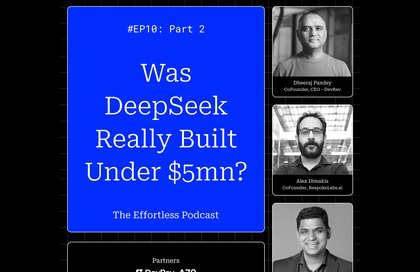

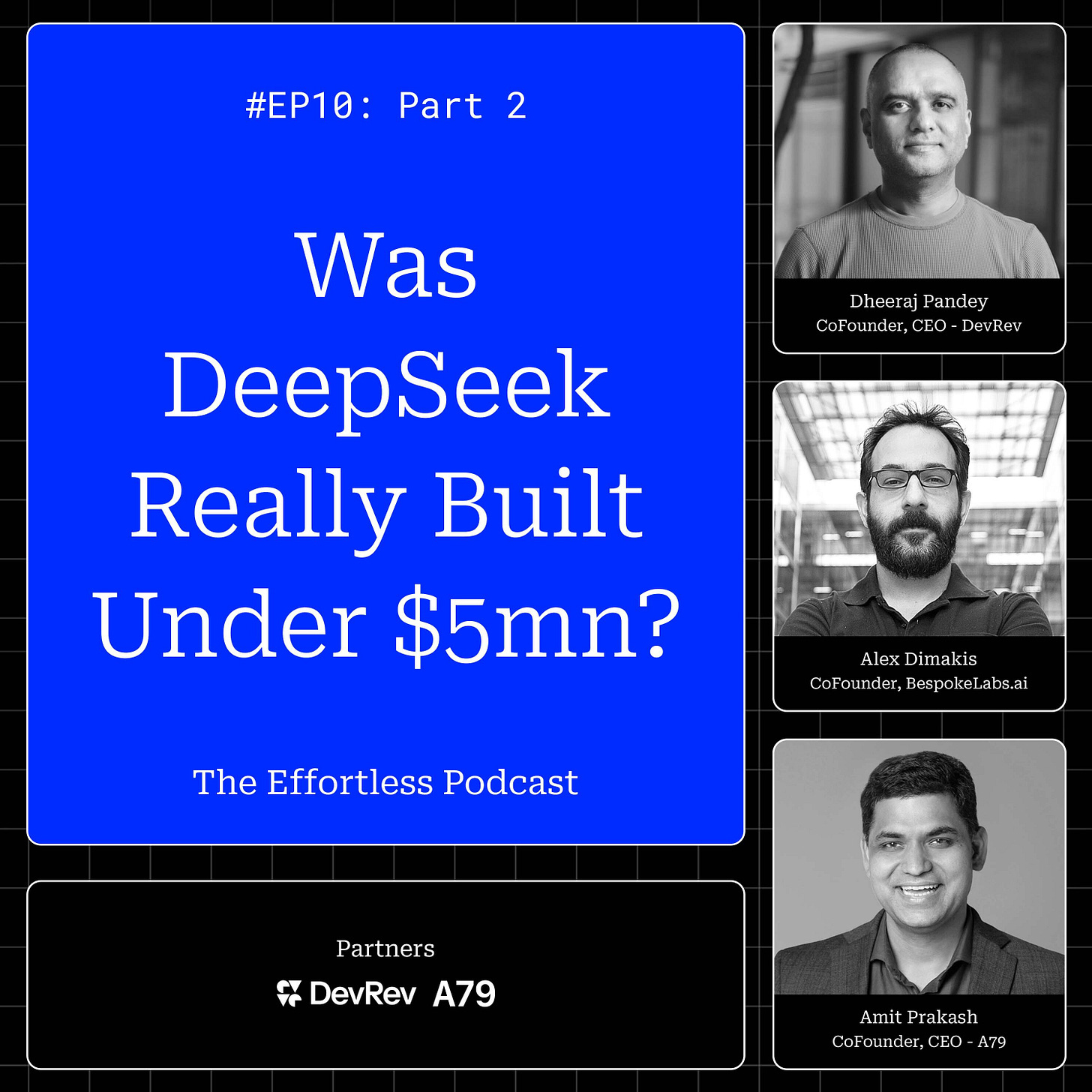

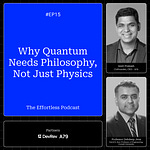
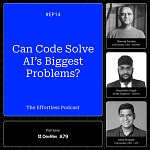
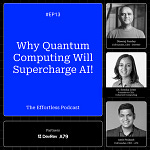


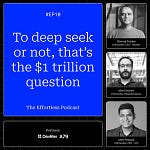
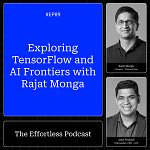
Share this post